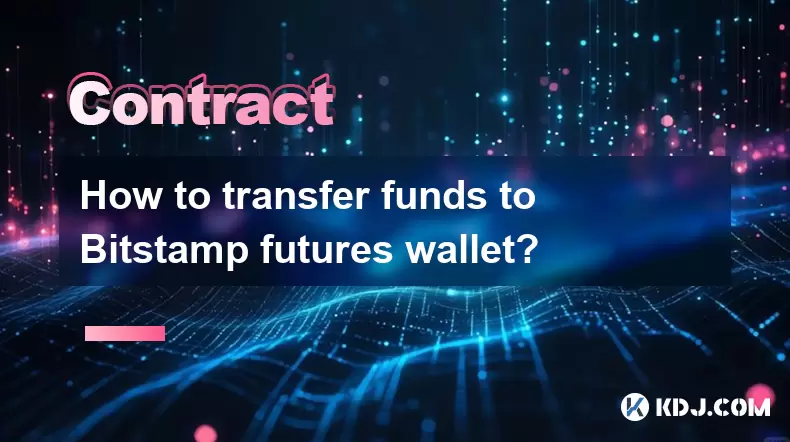-
 Bitcoin
Bitcoin $118900
1.66% -
 Ethereum
Ethereum $3735
1.35% -
 XRP
XRP $3.506
0.71% -
 Tether USDt
Tether USDt $1.000
-0.01% -
 BNB
BNB $799.4
5.78% -
 Solana
Solana $202.0
1.87% -
 USDC
USDC $0.9999
0.00% -
 Dogecoin
Dogecoin $0.2661
1.89% -
 Cardano
Cardano $0.8877
1.59% -
 TRON
TRON $0.3173
2.45% -
 Hyperliquid
Hyperliquid $45.00
2.59% -
 Stellar
Stellar $0.4723
3.40% -
 Sui
Sui $3.970
1.32% -
 Chainlink
Chainlink $19.67
1.94% -
 Hedera
Hedera $0.2710
1.99% -
 Avalanche
Avalanche $25.74
-0.01% -
 Bitcoin Cash
Bitcoin Cash $528.1
1.98% -
 Litecoin
Litecoin $120.1
3.57% -
 Shiba Inu
Shiba Inu $0.00001525
1.26% -
 UNUS SED LEO
UNUS SED LEO $8.989
-0.01% -
 Toncoin
Toncoin $3.304
1.74% -
 Polkadot
Polkadot $4.531
3.38% -
 Uniswap
Uniswap $10.74
2.51% -
 Ethena USDe
Ethena USDe $1.001
0.00% -
 Monero
Monero $325.5
2.44% -
 Pepe
Pepe $0.00001413
1.31% -
 Bitget Token
Bitget Token $4.860
0.85% -
 Dai
Dai $0.9999
0.01% -
 Aave
Aave $307.3
-2.07% -
 Bittensor
Bittensor $448.8
2.91%
How does the KuCoin Futures insurance fund work?
The KuCoin Futures Insurance Fund protects traders from losses during extreme volatility by covering shortfalls when liquidations can't be fully absorbed by market liquidity or auto-deleveraging.
Jul 23, 2025 at 06:00 am

What Is the KuCoin Futures Insurance Fund?
The KuCoin Futures Insurance Fund is a dedicated reserve designed to protect traders from losses caused by auto-deleveraging (ADL) events during extreme market volatility. When a trader's position is liquidated and the liquidation cannot be fully absorbed by the available market liquidity or the auto-deleveraging system, the insurance fund steps in to cover the remaining deficit. This mechanism ensures that profitable traders receive their full gains even when counterparties are unable to fulfill their obligations. The fund is funded exclusively through the realized profits of liquidated positions, meaning no direct contributions are made by users or KuCoin itself beyond the system’s natural operation.
How Is the Insurance Fund Built?
The insurance fund grows automatically through the following mechanisms:
- When a position is liquidated at a price worse than the bankruptcy price, the difference (known as the "insurance clawback") is added to the fund.
- This excess profit from liquidations—often referred to as "bad debt elimination"—is automatically credited to the insurance balance.
- Each contract type (e.g., BTC/USDT, ETH/USDT perpetuals) maintains its own separate insurance fund, preventing cross-contamination between markets.
- The fund balance for each contract is publicly viewable in real-time on KuCoin’s Futures page under the “Insurance Fund” tab, allowing transparency for all users.
When Does the Insurance Fund Activate?
The fund is triggered only under specific failure conditions: - If a liquidation occurs and there is insufficient counterparty liquidity to absorb the loss, the system attempts to auto-deleverage opposing positions.
- If ADL fails to fully close the gap—due to lack of high-leverage opposing traders—the insurance fund covers the shortfall.
- This prevents profitable traders from experiencing partial or no payouts during cascading liquidations.
- Importantly, the fund does not cover losses from normal trading, slippage, or user error—it only intervenes when systemic insolvency risk arises from a single liquidation event.
Step-by-Step: How the Insurance Fund Protects You
To understand how this works in practice, consider this scenario: - You hold a long position in BTC/USDT perpetual futures and profit when BTC price surges.
- A trader on the opposite side (short) gets liquidated during the same surge.
- Their liquidation price is worse than expected, leaving a gap between what they owe and what the market can absorb.
- KuCoin’s system checks the BTC/USDT insurance fund balance.
- If the fund has enough balance, your full profit is paid out immediately without any delay or reduction.
- If the fund lacks sufficient funds, the system may resort to full ADL, impacting other short traders—but this is rare due to the robust growth of the fund over time.
Can You Access or Withdraw the Insurance Fund?
No user, including KuCoin, can withdraw or manipulate the insurance fund. It is strictly reserved for covering auto-deleveraging shortfalls. Even during prolonged bear markets where many longs are liquidated, the fund remains locked and cannot be used for platform operations, refunds, or bonuses. This immutability is enforced through smart contract logic and internal risk management protocols. Users are encouraged to monitor the fund balance regularly—it serves as a health indicator for the futures market’s resilience.Transparency and Real-Time Monitoring
KuCoin provides live updates on each contract’s insurance fund: - Navigate to the Futures trading page.
- Click on the specific contract (e.g., BTC/USDT Perpetual).
- Scroll to the “Insurance Fund” section to see the current balance in both the base currency (BTC) and USDT equivalent.
- Historical changes to the fund are also logged, showing how much was added during each major liquidation event.
This level of detail allows traders to assess market risk before entering high-leverage positions, especially during volatile periods like macroeconomic announcements or flash crashes.Frequently Asked Questions
Q: Does the insurance fund affect my margin balance or fees?
No. The insurance fund operates independently of your margin account. You do not pay extra fees to contribute to it, nor does it deduct from your available balance. It is funded solely by liquidation surpluses.Q: What happens if the insurance fund runs out during a massive crash?
In extremely rare cases where the fund is depleted, KuCoin activates full auto-deleveraging (ADL) across all profitable opposing positions. Affected traders receive notifications and can view their ADL ranking in the “Positions” tab. This ensures no single trader bears the entire loss.Q: Is the insurance fund the same for all KuCoin Futures contracts?
No. Each futures contract maintains its own isolated insurance fund. For example, the ETH/USDT fund cannot be used to cover a shortfall in the BTC/USDT market. This prevents risk spillover between assets.Q: Can I see how much the insurance fund has grown over time?
Yes. KuCoin displays historical data for each contract’s insurance fund under the “Insurance Fund History” section. This includes timestamps, amounts added, and the triggering liquidation events—useful for backtesting and risk analysis.
Disclaimer:info@kdj.com
The information provided is not trading advice. kdj.com does not assume any responsibility for any investments made based on the information provided in this article. Cryptocurrencies are highly volatile and it is highly recommended that you invest with caution after thorough research!
If you believe that the content used on this website infringes your copyright, please contact us immediately (info@kdj.com) and we will delete it promptly.
- ONDO ETF Incoming? 21Shares and the Coinbase Custody Connection
- 2025-07-23 14:30:12
- Check Your Change! UK Coins Worth £40,000 Could Be Hiding in Plain Sight
- 2025-07-23 14:50:12
- PNC Bank & Coinbase: A New York Minute on Crypto Services Partnership
- 2025-07-23 14:50:12
- Crypto, India, and the COINS Act: A New Dawn for Digital Assets?
- 2025-07-23 14:55:12
- IREN's Bitcoin Mining Prowess Meets AI: An SOTP Valuation Deep Dive
- 2025-07-23 12:30:12
- Arca, PENDLE, and Kraken: Navigating DeFi's Institutional Currents
- 2025-07-23 11:10:11
Related knowledge

Why is my Bitstamp futures position being liquidated?
Jul 23,2025 at 11:08am
Understanding Futures Liquidation on BitstampFutures trading on Bitstamp involves borrowing funds to open leveraged positions, which amplifies both po...

Does Bitstamp offer inverse contracts?
Jul 23,2025 at 01:28pm
Understanding Inverse Contracts in Cryptocurrency TradingIn the realm of cryptocurrency derivatives, inverse contracts are a specific type of futures ...

How to find your Bitstamp futures trade history?
Jul 23,2025 at 08:07am
Understanding Bitstamp and Futures Trading AvailabilityAs of the current state of Bitstamp’s service offerings, it is critical to clarify that Bitstam...

Can I use a trailing stop on Bitstamp futures?
Jul 23,2025 at 01:42pm
Understanding Trailing Stops in Cryptocurrency TradingA trailing stop is a dynamic type of stop-loss order that adjusts automatically as the price of ...

How to trade ETH perpetuals on Bitstamp?
Jul 23,2025 at 03:28am
Understanding ETH Perpetual ContractsETH perpetual contracts are derivative products that allow traders to speculate on the price of Ethereum without ...

How to transfer funds to Bitstamp futures wallet?
Jul 23,2025 at 04:14pm
Understanding Bitstamp Futures WalletBefore initiating any transfer, it’s crucial to understand that Bitstamp separates your Spot Wallet from your Fut...

Why is my Bitstamp futures position being liquidated?
Jul 23,2025 at 11:08am
Understanding Futures Liquidation on BitstampFutures trading on Bitstamp involves borrowing funds to open leveraged positions, which amplifies both po...

Does Bitstamp offer inverse contracts?
Jul 23,2025 at 01:28pm
Understanding Inverse Contracts in Cryptocurrency TradingIn the realm of cryptocurrency derivatives, inverse contracts are a specific type of futures ...

How to find your Bitstamp futures trade history?
Jul 23,2025 at 08:07am
Understanding Bitstamp and Futures Trading AvailabilityAs of the current state of Bitstamp’s service offerings, it is critical to clarify that Bitstam...

Can I use a trailing stop on Bitstamp futures?
Jul 23,2025 at 01:42pm
Understanding Trailing Stops in Cryptocurrency TradingA trailing stop is a dynamic type of stop-loss order that adjusts automatically as the price of ...

How to trade ETH perpetuals on Bitstamp?
Jul 23,2025 at 03:28am
Understanding ETH Perpetual ContractsETH perpetual contracts are derivative products that allow traders to speculate on the price of Ethereum without ...

How to transfer funds to Bitstamp futures wallet?
Jul 23,2025 at 04:14pm
Understanding Bitstamp Futures WalletBefore initiating any transfer, it’s crucial to understand that Bitstamp separates your Spot Wallet from your Fut...
See all articles

























































































